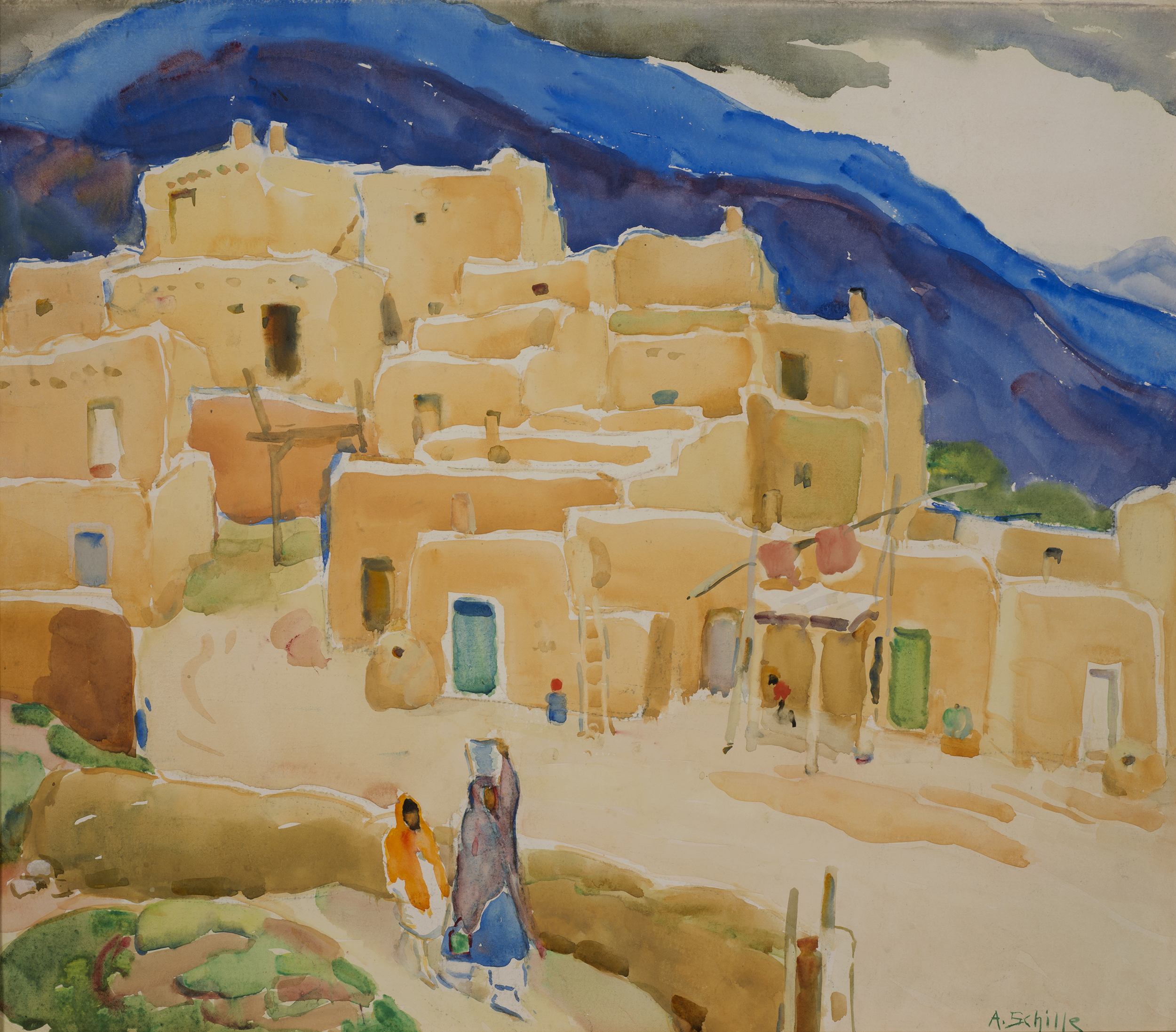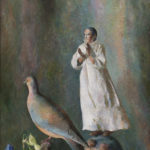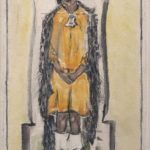Writer Shannon Severson
Photography Courtesy of Western Spirit Scottsdale’s Museum of the West
[dropcap]T[/dropcap]he American West has always been a beacon for adventurers, entrepreneurs, trend-setters and, of course, artists. “New Beginnings: An American Story of Romantics and Modernists in the West,” is an exhibition of 100 works by 70 well-known artists from the celebrated Tia Collection that makes its debut at Western Spirit: Scottsdale’s Museum of the West.
The exhibition at this Smithsonian affiliate features a fresh take on Western art, with works spanning nearly a century (1888-1983), and will remain through September 2019 before it proceeds to four additional institutes across the United States through 2021.
It’s the first time a traveling exhibition has made its debut at Museum of the West. It features paintings of varied media, sculpture, photography and textiles by both male and female artists in the styles of 19th century classicism and romanticism to early 20th-century modernism, including art nouveau, realism, cubism, art deco and abstract art.
“The community of Scottsdale is tremendously proud to host in its museum the first opening of this unique traveling exhibition and featuring never-before-shown artworks from this renowned collection,” says museum director and CEO Mike Fox.
“We are thrilled that our young institution is seen as worthy to be one of a number of other major institutions throughout the country to be sharing the creative inspiration and energy behind the New Beginnings exhibition.”
The Tia Collection, from which the exhibit emanates, is named for the collector’s 17-year-old daughter, and includes works from French impressionists to contemporary work from today’s artists. The collection is global in scope and is carefully curated and shared with museums here in the U.S. and around the world.
The works here are as varied in style, media and era as the artists who created them. Drawn to the rich landscape, open skies and new and ancient traditions, these creatives visited, often lived in and were inspired by the environs of Santa Fe and Taos, New Mexico during a time of great transition in the world.
Rapid industrialization, two world wars, a worldwide flu epidemic in 1918, the Great Depression, the upheaval of the 1960s and massive technological advancements prompted artists to seek new beginnings in a new landscape that was unlike anything they had experienced in their cities or countries of origin. The arid climate, pueblo architecture and, in Taos, the lack of electrical service and community water systems until 1935 made it a total departure from the lives these artists had always known.
Some, like Joseph Sharp, one of the founders of the famed Taos Society of Artists, made permanent moves to the area, becoming ambassadors of sorts to compel others to make the long, rugged trek to this new environment. And come, they did, permanently placing northern New Mexico on the map. Even today, the state remains home to more resident artists per capita than anywhere else in the country.
“It’s not a new idea to take the artists in New Mexico and present it in some fashion,” says Tia Collection Santa Fe curator Laura Finlay Smith, who organized the exhibition. “I wanted to do it in such a way that there is less convention, something unexpected.
“The whole idea behind this exhibition is to maintain this historic material and make it fresh and relevant to the 21st century, especially appealing to today’s younger audiences.”
That fresh approach begins with how the works are arranged. Pieces are grouped thematically rather than by artist. Colorful panels delineate the themes of “Land & Sky,” “Cultures” and “Working from Life.”
The exhibition highlights the ways in which the artists, whether visiting for a time or settling permanently, saw the people and their surroundings and celebrated the every day. They made a new beginning in this place and assigned great value to the environment, the traditions and the people of the area.
New Beginnings is a sort of time capsule that allows us to see what came before our hurried, digital world.
“Land & Sky,” depicts the changing seasons and their affect on the vast landscape and broad vistas that first attracted Sharp, a native of Ohio, and artists from New York, the Midwest and even further, from Europe and Russia, as was the case of Leon Gaspard. Here was a completely foreign environment.
“There are depictions of Christmas mass in Santa Clara Church and then a Hopi tribal dance,” says Finlay Smith. “Displaying this content side-by-side brings together a powerful contrast narrative to share a broader view and fresh perspective of the artists of this important region and time.”
The ways that artists and people from the distinctive cultures of Native American, Hispano and cowboy populations interacted in the everyday are shown in the way they dressed, the way they worshiped and celebrated, and the objects they surrounded themselves with. Modernist and Bisbee, Arizona native Patriciño Barela’s 1950 sculptures, “Crucifixion” and “Peace,” carved from native pine branch and juniper root respectively, are representative of not only religious objects, but also the art of a young day laborer whose work was ultimately “discovered” by WPA officials.
“Working From Life” features domestic-scale objects from the studios and homes of the artists and members of the community. Still lifes, stunning portraits, like Robert Henri’s 1917, “Lucinda,” and Leon Gaspard’s hand-painted kitchen table and four side chairs, circa 1940, alive with scenes of Russia, China, Mongolia and North Africa are found here. The collector painstakingly reunited the chairs after being stored, separated and even burned in a fire over the years.
The story of New Beginnings will strike the viewer as a rich history of not just a region of the American West, but of America itself.
“I’m a huge proponent that Western art is ultimately American art,” says Finlay Smith. “Mainstream American museums tend to group American and Western art as separate, but it should be viewed as part of a broader tradition.”










Comments by Admin